Understanding Your Free Solar Estimate
Choosing to invest in a solar energy system is a huge decision. The free estimate or proposal you receive should excite you for the future of your electrical needs and the sustainability of your home. You’re making a 25+ year investment to protect you from increasing electricity rates, save money on power bills, and contribute to a greener future for all generations. Read on to learn what to expect in a solar proposal and how to understand the numbers, equipment, and finances!
Key Values
Your solar proposal will contain terms like kW, kWh, Specific Production, and $/watt. For instance, if your proposal states you have an 8 kW solar array, you have a system capable of producing 8,000 watts of power. Understanding these values helps you gauge the system’s capacity.
kW of Solar
kW of solar refers to the system size of your solar array. kW is also an instance of power, not energy. If your neighbor asks you how large of a solar array you have, you would answer with 8 kW of solar, for example.
kWh of Energy
kWh is a measure of energy over time and is used to describe your solar energy system production over time, like annual production. It is also the value your electrical utility uses to charge your monthly power bill. We average $0.13 per kWh in Washington, so every kWh of solar energy you produce is credited 1:1 at the utility rate, which varies across utilities.
Specific Production
It is a measure of your proposed solar energy system efficacy. How much kWh of energy is produced per kW of solar installed, written as kWh/kW. In Western Washington, you can expect a specific production of around 1000 kWh/kW.
$/watt
$/watt is to measure the cost of your solar energy system. The larger the system cost, the lower the $/watt. Remember, there are 1,000 watts in a kW, so if you want to calculate the cost of your system size using the kW, you need to convert kW to watt.
Escalation Rate
The escalation rate of electricity is vital information that will determine your solar energy system’s return on investment (ROI). The escalation rate calculates the annual increase in the cost of electricity. The average escalation rate of electricity in the USA is 4%. Knowing the escalation rate of electricity is crucial. If electricity costs increase annually at 4%, your savings from solar energy will grow even more valuable over time as conventional electricity becomes more expensive.
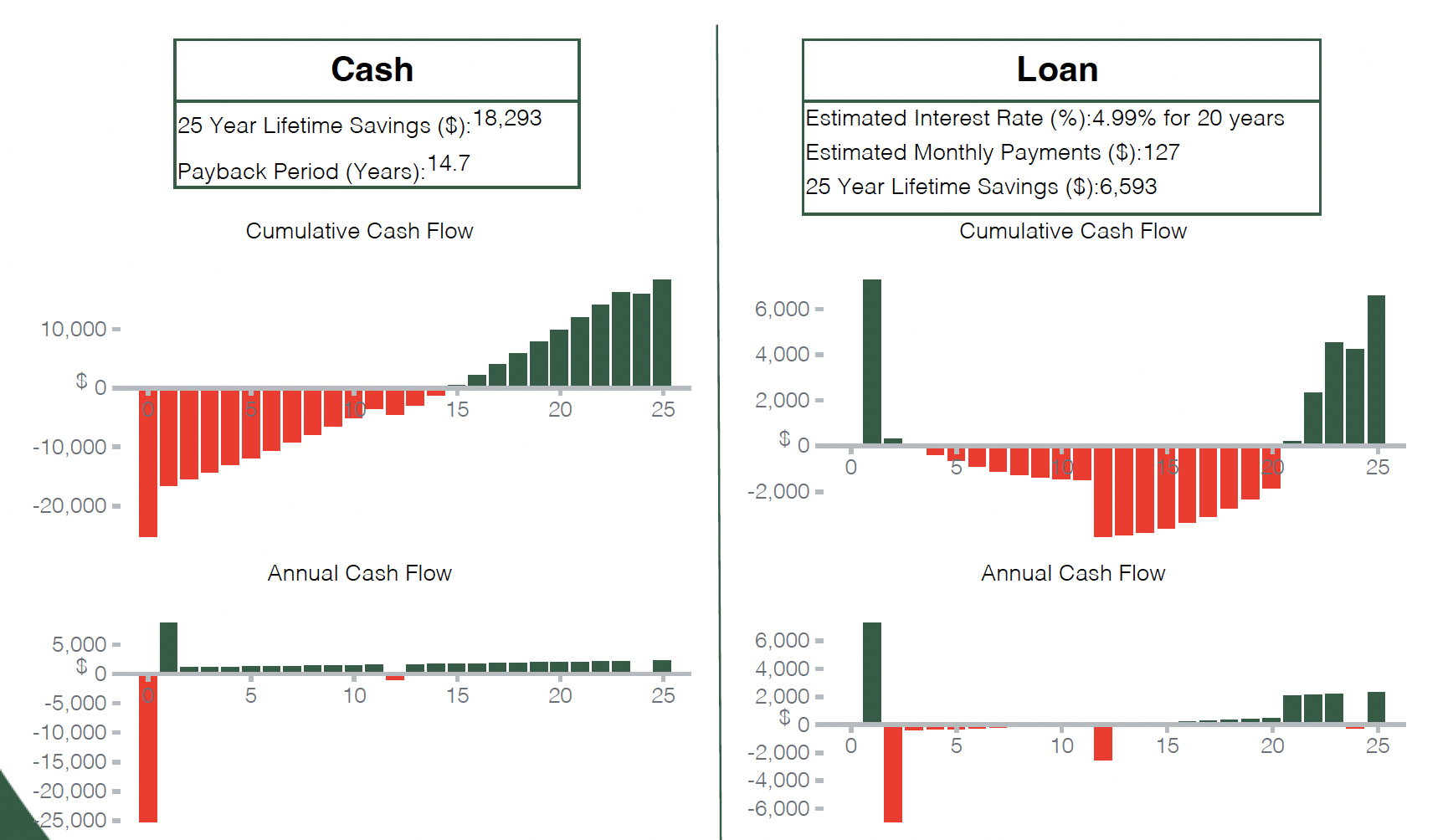
Financing and Cost
Your proposal system’s cost and financing options section should include the following elements. The $/watt of the system, the total cost, financing options, and ROI. In this section, you want to understand how much you’ll need to pay, at what $/watt rate, and the ROI, which will tell you your break-even point. Pay attention to $/watt, total cost, financing options, and ROI. For example, if the $/watt is $3 and your system’s total cost is $15,000, your break-even point is when your savings equal your investment.
Incentives
For Washington State residents, two incentives apply to your solar energy system. The Washington State incentive provides a sales tax exemption on solar energy systems and the Federal Investment Tax Credit (ITC). The savings from the sales tax exemption depends on the city you live in. The proposal should state the total savings from the Federal ITC of 30%; watch out for proposals that give you a system cost with the ITC already taken into account, making the system cost appear cheaper than it is. Be aware of state and federal incentives like the Washington State sales tax exemption and the Federal Investment Tax Credit (ITC). If you’re told you’re getting a 30% discount from the ITC, it means that a $10,000 system will effectively cost you $7,000.
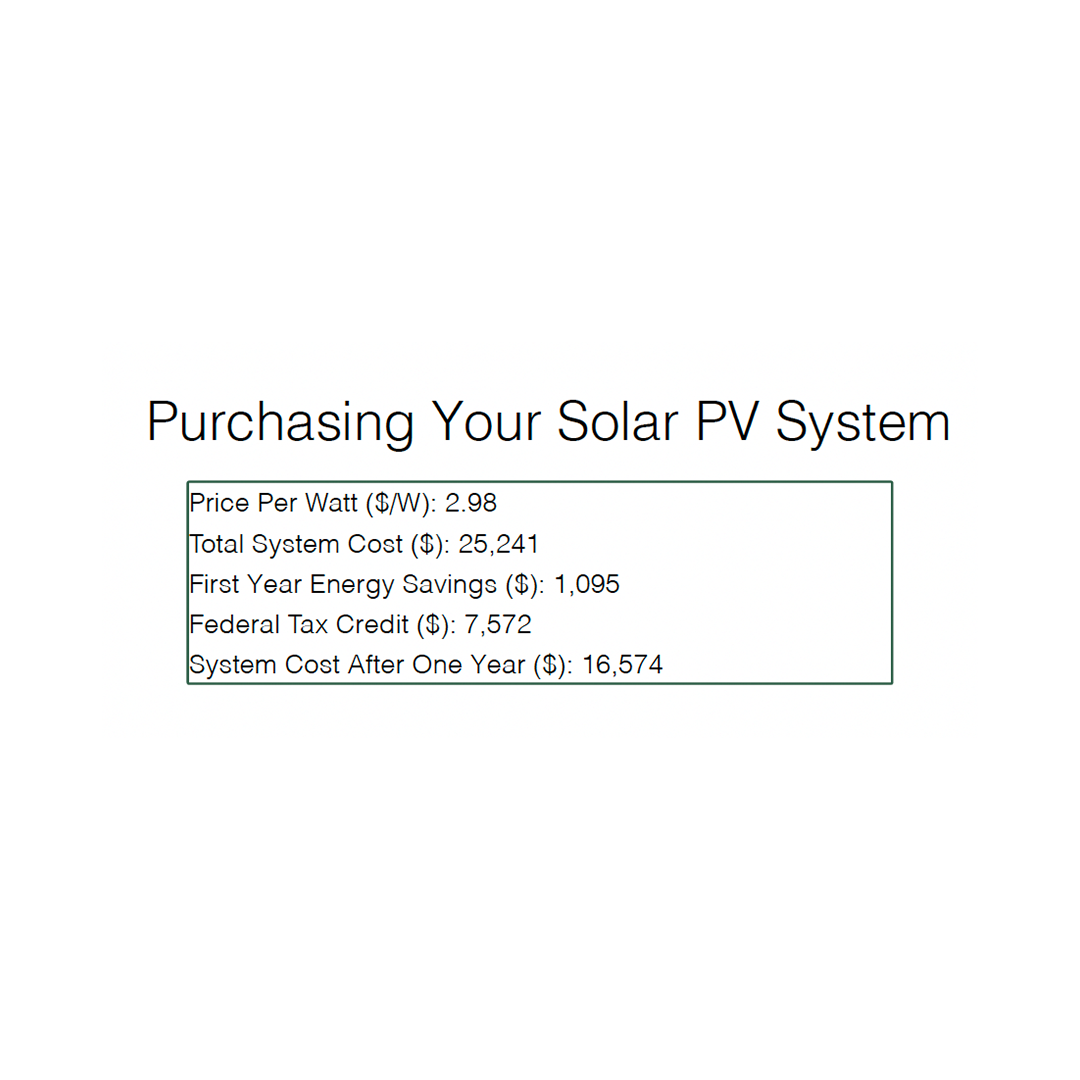
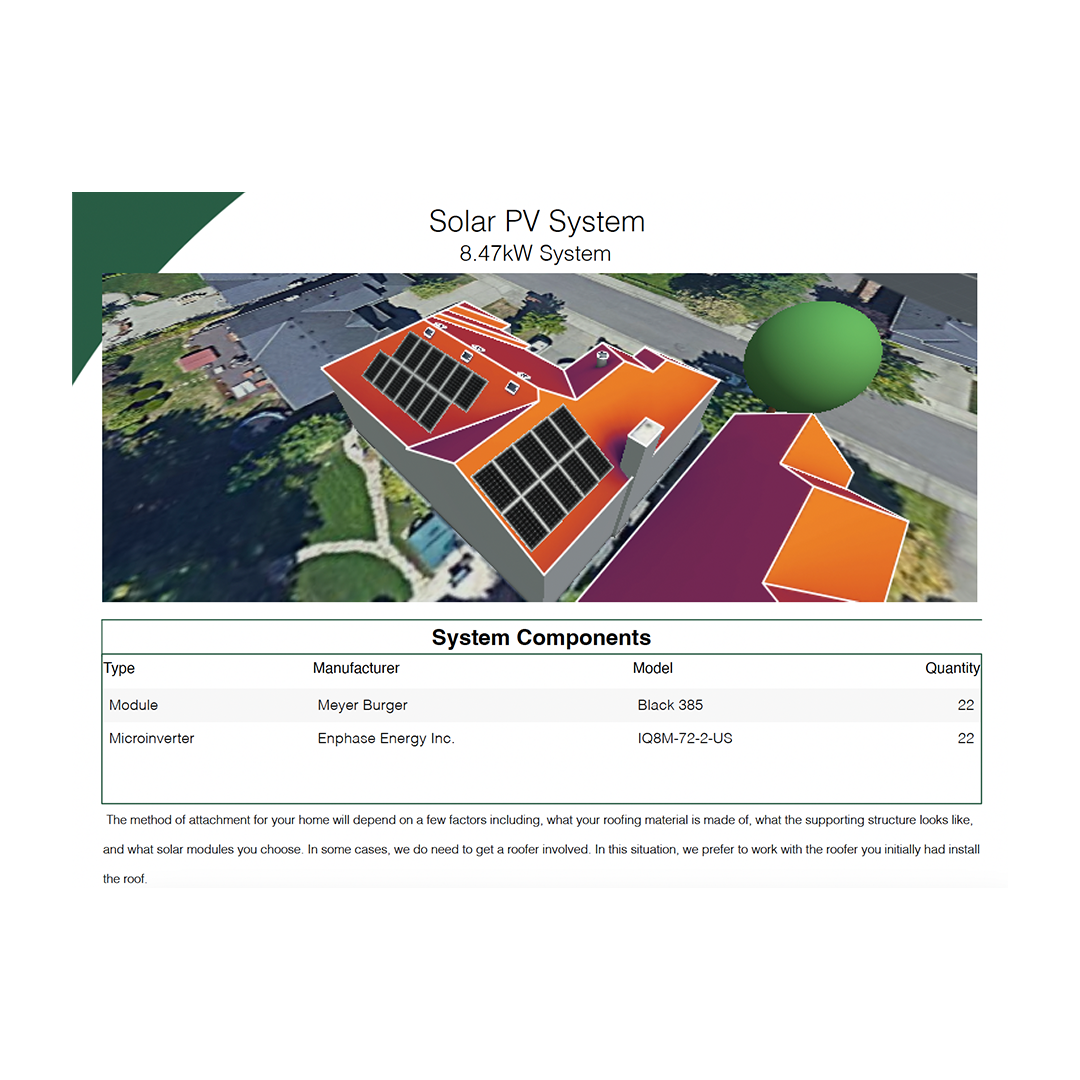
Equipment
You should know what you are paying for, especially the type of solar panel. Not all solar panels are made equal, and depending on your proposed solar array location, one panel may be better due to shade loss mitigation technology or footprint. For example, a solar panel with shade loss mitigation technology might be crucial if your location experiences partial shading, ensuring you still get good energy production. The same goes for the type of inverter, racking and attachment equipment, and the monitoring software to track production. Ask for the equipment spec sheets to examine solar panel degradation over time, warranty, and technological features.
Warranties
The warranties you should look for are equipment warranty and labor warranty. Solar is a long-term investment with equipment with a warranty for 25 years. Knowing that the contractor labor warranty matches the equipment warranty is vital to having support and peace of mind for your investment over the life of your solar energy system. Ensure that roof-top penetrations are covered for leaks, and ask what a troubleshooting service would look like once you own your solar energy system. At Northwest Electric and Solar, we have a 25-year labor warranty!
Payment and Installation Timeline
For most contractor work, you must sign a contract that triggers a series of events. Along with the contract signature, an initial deposit payment will kick-start the events leading to your solar energy system installation. Understanding the payment schedule is vital to ensuring your system is installed on time, as the payments typically coincide with material orders and internal review processes. Understanding the payment schedule is critical. Your initial deposit often triggers the process, leading to timely system installation and a smooth transition to solar power.
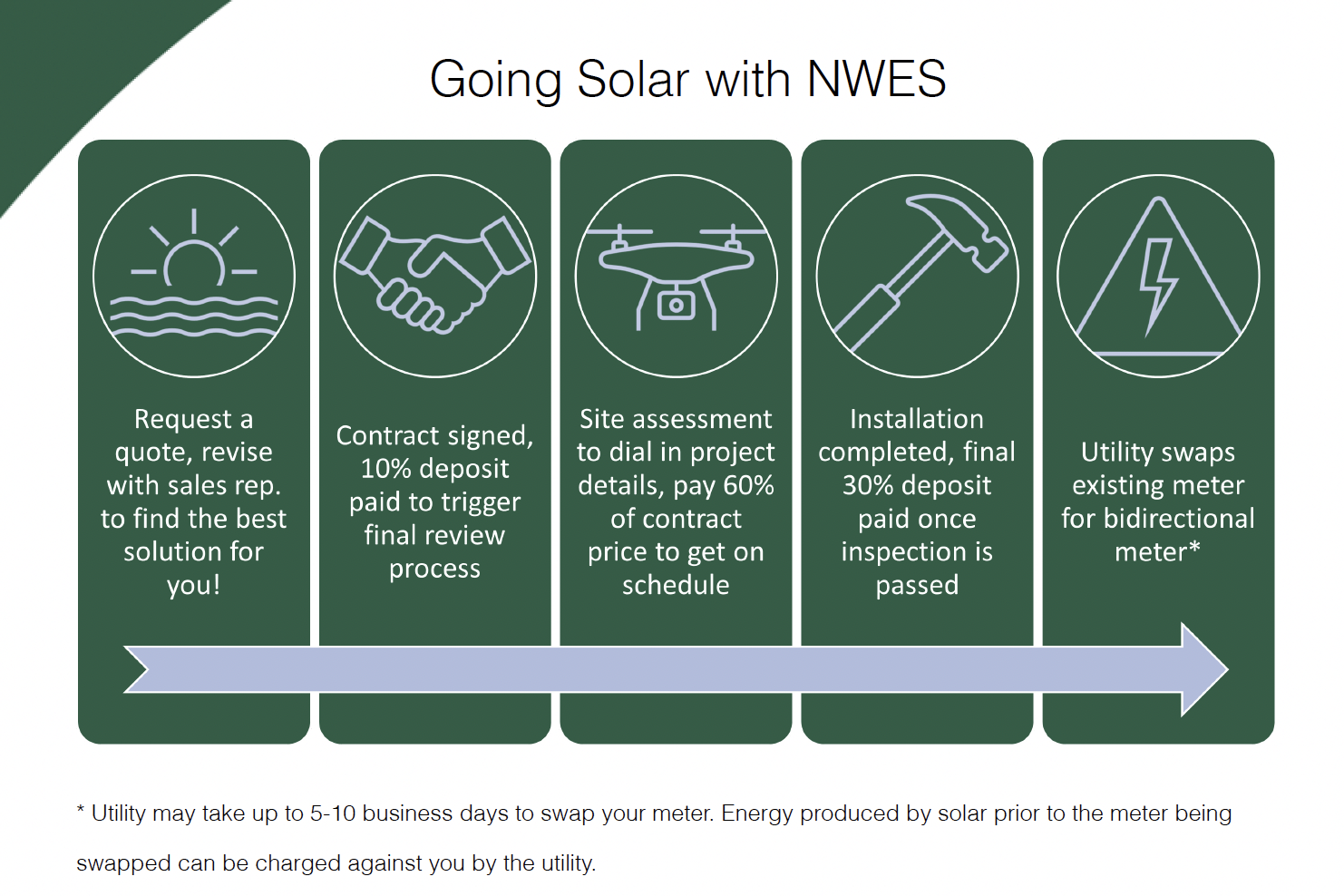
Monitoring
Monitoring is essential for any solar energy system installed today, as you can observe the energy production from each solar panel. Real-time monitoring is like having a dashboard for your solar system. It lets you pinpoint any underperforming panels, ensuring maximum energy generation throughout the system’s life. This feature also helps you identify any solar panels that stopped producing, which is vital for reporting this issue to your installer so you don’t miss out on precious solar energy generation!
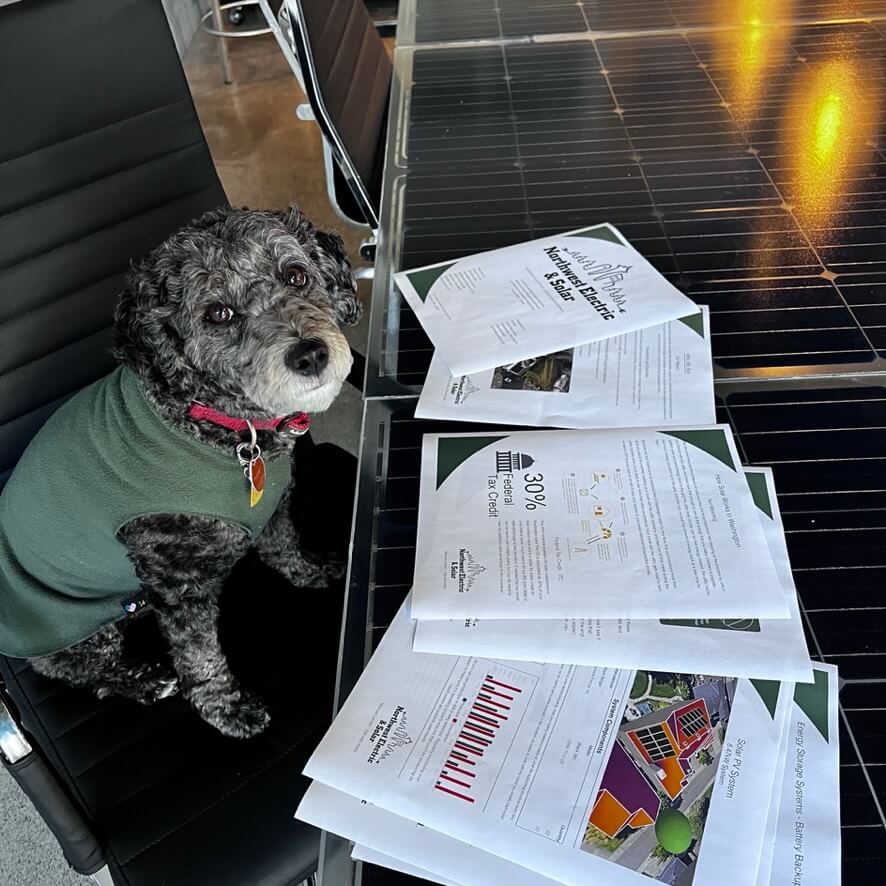
Better Understanding Leads to Better Decisions
In conclusion, this journey starts with you investing in a solar energy system. Your free estimate or proposal isn’t just a document; it’s a roadmap to a brighter future for your electrical needs and the sustainability of your home. You’re making a long-term commitment that will protect you from rising electricity rates, cut down your power bills, and contribute to a greener world for generations to come.
By grasping these critical elements, you can make an informed choice about your solar investment. Take the first step – get a free solar system estimate and learn how to save money on your power bills while contributing to a greener, more sustainable future. Your solar investment isn’t just about today; it’s about securing your future with clean, sustainable power.


